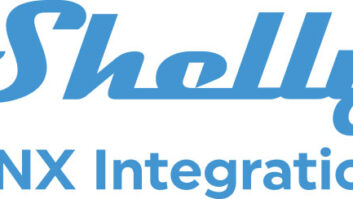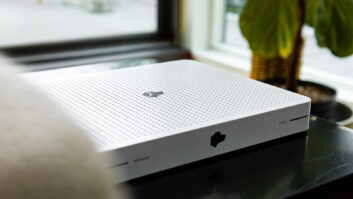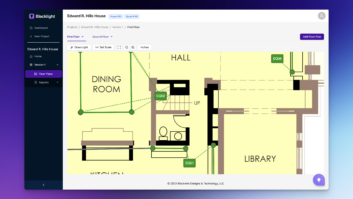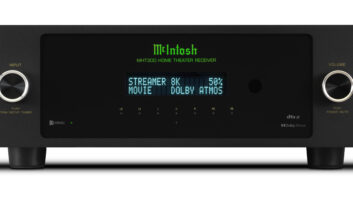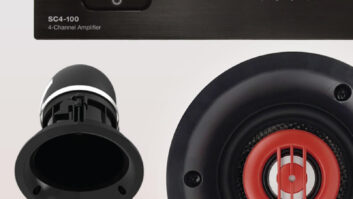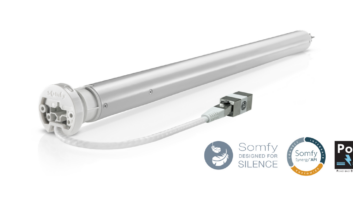Its taken a couple of years for the industry to come around, but now most major makers of distributed home A/V and lighting systems offer control interfaces based on IP (Internet Protocol) technology. And well they should: the cost and convenience benefits of control over IP, including the ability to use PCs, PDAs, and other web-enabled devices as controllers, makes sense for customers as well as installers.
Lets not, however, lose sight of an important fact: for all the companies jumping on the convergence bandwagon and aggressively promoting their prowess with TCP/IP, nearly all systems still distribute content, particularly audio, the way theyve always done: via analog, either with balanced, low level signals to an in-room amplifier, over amplified speaker cable from a centralized system to a remote zone, wirelessly via radio frequency (RF), or a combination of these options.
In reading the ads and brochures from these companies, one might not immediately realize the divergence between digital control and analog content. Many firms so tout their digital, IP-based controls that one would think they were digitizing and streaming all their signalscontrol and contentover a home Ethernet network. They arent.
There are some significant technical hurdles to convey content digitally over IP. The major challenge is time synchronization. Imagine what would happen if, when walking room to room, the music was one-tenth of a second out of synch, and then imagine that difference across four or five zones in a house. While synchronization isnt a requirement in common Internet applications like e-mail or desktop streamingit doesnt matter if everyone gets a message or receives a streaming newscast at exactly the same momentsynchronization is an absolute necessity in a home entertainment network.
With synchronization solved, though, there are many advantages in sending content over TCP/IP and in structuring a home A/V distribution system as an Ethernet network. Perhaps the single greatest benefit is eliminating problems with noise and signal loss, regardless of the length of a cable run or the presence of other electrical and electronic equipment. Digitizing and transmitting (i.e., streaming) content over IP protects signal integrity while enabling bit-for-bit fidelity with source material including DVD Audio and HDTV.
A second and related benefit, and one never before realized in home audio, is being able to keep signals in the digital domain until they literally reach the speaker, minimizing or completely eliminating speaker runsanother source of noise and loss. By using IP-based digital amps that are either co-located or integrated with an in-wall or in-ceiling speaker, analog signal paths are kept to absolute minimum lengths.
There are additional and exciting possibilities within this scenario: designers are already working on digital IP-based amps which, based on music metadata contained in the IP stream, automatically change crossover frequencies or equalization settings based on music genre, source, or other factors. While products like this arent yet ready for market, they will be in a relatively short period, and the IP-based systems now available will be plug-n-play compatible with this exciting near-future technology.
Maintaining a digital signal from source to output zone also eliminates another pesky installation problem: heat build-up. Distributed amplification means there are no amp racks to cool, and no special or costly considerations for ventilation. Lower heat also means greater reliability and longevity for all equipment in the system, source components as well as distribution electronics.
Another significant benefit of systems with IP-based content and control is fault tolerance. Entertainment systems built on network architecture distribute intelligence and connectivity and dont rely a centralized matrix controller for system operation. Just as computer networks remain operable when an individual PC fails, IP-based entertainment systems wont be brought down by a zone specific failure. For the installer, this means fewer urgent calls from customers, easier troubleshooting when problems occur, and faster, more modular repairs.
One compelling advantage of Ethernet-type A/V distribution is a reduction in labor and materials for installing cable. A fully IP-based system requires only industry-standard Siamese cable (Cat-5/4×16) from each location. All interconnects, apart from power and legacy source components (like DVD players or non-streaming servers) are modular RJ45 jacks on Cat-5 cable. Consider the advantage of using a single Cat-5 to carry audio and video as well as control (compared with, for example, systems that have functionally redundant cabling to provide composite, S-video, and component connectionsjust for video.) The reduction in wiring not only saves time and cost, it reduces the likelihood service problems. Cabling is a constant source of headachesthe less wire, the fewer the problems.
Installers should also be interested to learn that with TCP/IP as a foundation protocol, theyll need less-specialized programming skills, and fewer, if any, high-level programmers on staff. TCP/IP, a widely used open standard protocol, allows for a sleek user interface without a lot time-consuming custom programming by specialists. Currently, most companies that talk about having an IP-based interface still rely on proprietary systems requiring specially trained programmers to modify or customize.
Wide ranging flexibility, including future upgradeability, is another important benefit of an IP-based entertainment network. Its a straightforward and simple affair to add any TCP/IP compliant device to the network, including devices that expand network capability; you simply connect them to the network. For example, someone with an A/V distribution network based on TCP/IP could instantly adding lighting, home automation, and/or security features simply by plugging in the appropriate device, including third-party products. Without a common protocol, devices would require customized programming for installation and operation.
For installers peering into the crystal ball of digital convergence, theres an unquestionably strong future for IP-based products and technology, if for no other reason that the Internet has become a common denominator for global communications. With the worlds of computer networking and home entertainment drawing closer together, and greater numbers network technicians entering the home systems market, popularity and preference for true IP-based home technologies will grow steadily and rapidly.
While there may always be markets for proprietary products and technology, systems based on open-standards typically create the greatest market potential and business opportunity. Installers who agree with this analysis might want to take a few moments to consider which products now on the market offer the greatest potential for their businesses growth.
Herman Cardenas is the founder and CEO of NetStreams LLC, a manufacturer of networked entertainment systems based on Internet protocol (IP) technology.
